Welcome to my kitchen's pride and joy - authentic Sinanglaw! The first time I made this traditional Filipino beef soup from Vigan, I was blown away by how the simple combination of beef, offal, and sour kamias created such a deeply satisfying dish.
The broth strikes that perfect balance between tangy and savory with just a hint of bitterness that makes it incredibly unique. Whether you're looking for a comforting dinner or an impressive dish to serve friends with cold beer, this recipe has been tested countless times in my kitchen and never fails to impress.
Jump to:
Why You'll Love This Recipe
- Rich, Complex Flavors - The combination of beef, offal, and sour elements creates a depth of flavor that's hard to find in simpler soups.
- Economical - Uses affordable cuts of meat and offal that become tender and delicious through slow cooking.
- Impressive Yet Authentic - Serves as both comfort food and a conversation starter when entertaining guests.
- Customizable Heat - Adjust the chilies to make it as mild or spicy as you prefer.
- Make-Ahead Friendly - Tastes even better the next day, making it perfect for meal prep.
- Health Benefits - Bone broth and offal provide nutrients not found in regular cuts of meat.
Ingredients
Each component of Sinanglaw plays an essential role in creating its complex flavor profile. The combination of different beef cuts provides varying textures and depths of flavor, while kamias (or tamarind) delivers the signature sourness.
Garlic, ginger, and onions form the aromatic base that mellows the stronger flavors of offal. The bile or bitter gourd adds the subtle bitterness that distinguishes Sinanglaw from other Filipino soups.
This careful balance of ingredients creates a traditional dish that has stood the test of time in Filipino cuisine.
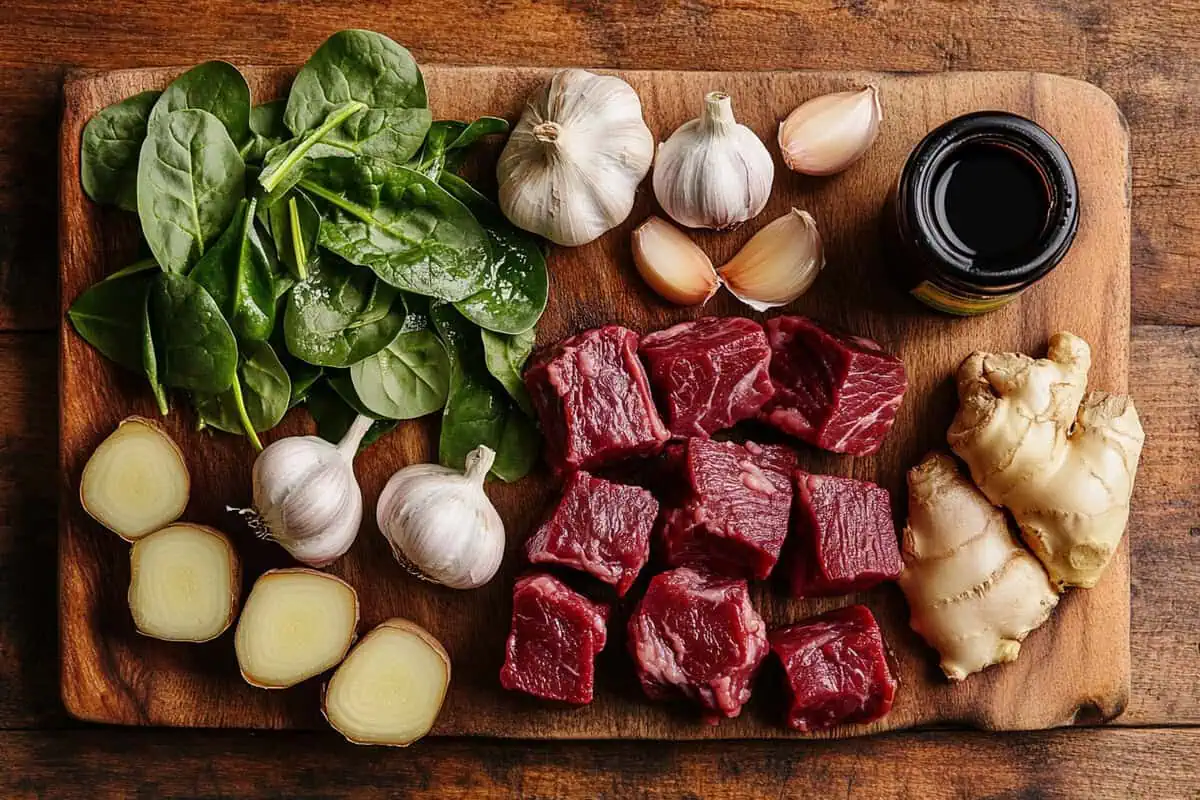
- 500g beef brisket or any cheap cut, cubed into 2-inch pieces
- 300g beef tendons, cut into squares
- 300g pre-cooked beef tripe, cubed
- ¼ cup diluted beef bile or 2-3 pieces bitter gourd, roughly chopped
- 500g kamias or tamarind
- 1 whole garlic bulb, minced
- 1 thumb-sized ginger, thinly sliced
- 2 large onions, quartered
- 6 finger chilies, thinly sliced
- Fish sauce or sea salt to taste
- Spinach leaves (optional)
- 2 tablespoons cooking oil
Equipment
- Large, deep pot – For boiling and simmering the meat and broth
- Fine-mesh sieve – Essential for straining the broth to achieve clarity
- Sharp knife and cutting board – For properly cutting meat and vegetables
- Muslin cloth – Used for wrapping kamias/tamarind and bitter gourd if using
- Wooden spoon – For sautéing and stirring without scratching your pot
- Ladle – For serving the soup
- Small bowl – For preparing diluted bile if using
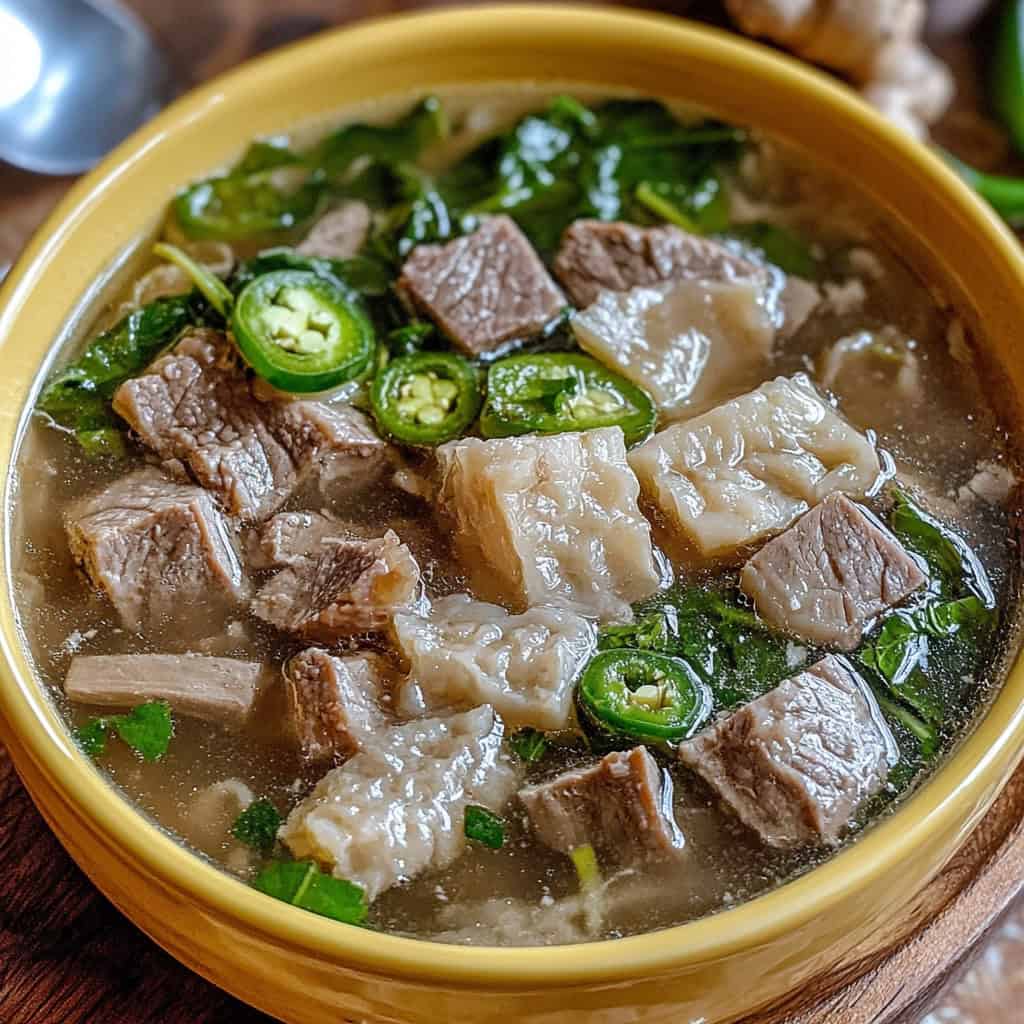
How To Make
- Prepare Base Flavors: In a deep pot, heat oil and sauté garlic, onions, and ginger until fragrant and onions are translucent.
- Brown Meat: Add beef brisket and brown on all sides. Once browned, add the beef tendons.
- Initial Simmer: Add enough water to cover the meat pieces. Bring to a boil, then reduce heat and simmer for 45 minutes.
- Create Clear Broth: Turn off the heat and strain the soup through a fine-mesh sieve to create a clear broth. Set aside the meat pieces.
- Tenderize Tendons: Return the clear broth and tendons to a clean pot (set aside the beef). Bring to a boil and simmer until tendons are soft (90-120 minutes), adding water as needed.
- Add Remaining Ingredients: Return the beef to the pot and add tripe, finger chilies, and bile (if using). If using bitter gourd, place it in a muslin cloth together with tamarind or kamias, wrap it well, and add to the pot. Simmer for 30 minutes.
- Extract Flavors: If using the muslin cloth method, press it against the side of the pot to extract the juices into the soup.
- Season: Add fish sauce or salt to taste. If adding spinach, stir it in just before serving until wilted.
- Serve: Ladle into bowls and serve hot.

Tips from Lola's Kitchen
- For maximum flavor, use a mix of beef cuts. The combination of lean meat, fatty portions, and offal creates a richer, more complex broth.
- Don't rush the tendons. They need a long, slow simmer to become tender. The gelatinous texture they develop is a signature element of authentic sinanglaw.
- Diluting bile is a traditional technique. If using, mix 1 part bile with 3 parts water to control the bitterness level.
- For a clearer broth, skim off any foam that rises to the surface during the initial simmering stage.
- Toast ginger and garlic slightly in oil before adding onions for a deeper, more complex flavor profile.
Substitutions
- Can't find kamias? Tamarind is the best substitute, but you can also use a combination of lime juice and a small amount of green mango for sourness.
- No beef bile available? Bitter gourd (ampalaya) wrapped in cloth and simmered in the broth provides a similar bitter note. For a milder version, skip both and add extra kamias or tamarind for a purely sour soup.
- Beef cuts: While brisket is traditional, chuck roast, shank, or stew meat work well too. Look for cuts with some fat and connective tissue.
- Offal alternatives: If tripe isn't available, beef heart or liver can be used instead. For a less adventurous version, simply increase the amount of regular beef.
- No finger chilies? Serrano or jalapeño peppers make good substitutes, or use red pepper flakes for heat.
Troubleshooting
- Soup lacks flavor? Add fish sauce gradually until the taste deepens. A splash of calamansi juice or lime at the end brightens the flavors.
- Broth too bitter? Add more kamias/tamarind or a teaspoon of sugar to balance the bitterness.
- Meat still tough? Continue simmering at low heat. Tough cuts need time to break down. If pressed for time, a pressure cooker can reduce cooking time significantly.
- Broth too fatty? Refrigerate the soup and remove the solidified fat from the top, then reheat.
- Muslin cloth tore? Strain the entire soup through a fine-mesh sieve to remove any loose bits.
Storage & Reheating
- Refrigerator: Sinanglaw can be stored in an airtight container for up to 3-4 days. The flavors often deepen and improve overnight.
- Freezer: For longer storage, freeze in portion-sized containers for up to 3 months. Thaw overnight in the refrigerator before reheating.
- Reheating: Warm slowly over medium-low heat, stirring occasionally. Add a splash of water if the soup has thickened too much during storage.
- Revitalizing: When reheating, add fresh spinach or other greens and an extra splash of fish sauce to refresh the flavors.

FAQ
Why does authentic sinanglaw use bile?
Bile adds the characteristic bitter note that balances the sourness of kamias. This bitter-sour balance is a signature flavor profile in many Filipino dishes.
Is sinanglaw healthy?
While rich in protein and minerals from the meat and offal, sinanglaw is also high in cholesterol. Enjoy in moderation, especially if watching your cholesterol levels.
Can I make a milder version for first-timers?
Yes! Reduce or omit the bile/bitter gourd and increase the kamias/tamarind for a more sour than bitter soup that's more approachable for newcomers.
How do I know when tendons are fully cooked?
Properly cooked tendons should be soft and gelatinous, offering little resistance when pierced with a fork.
What can I serve with sinanglaw?
Traditionally served with steamed white rice. Some also enjoy it with a side of bagoong (fermented shrimp paste) and calamansi or lime wedges for additional flavor customization.
Can I make this in a slow cooker or Instant Pot?
Yes! For slow cooker, cook on low for 8-10 hours. For Instant Pot, pressure cook the beef and tendons for 45 minutes, then add remaining ingredients and simmer using the sauté function.
Related
Looking for other recipes like this? Try these:
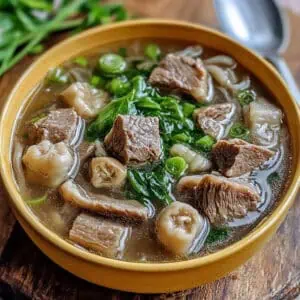
Sinanglaw: Authentic Filipino Beef and Offal Soup
Ingredients
- 500 g beef brisket or any cheap cut cubed into 2-inch pieces
- 300 g beef tendons cut into squares
- 300 g pre-cooked beef tripe cubed
- ¼ cup diluted beef bile or 2-3 pieces bitter gourd roughly chopped
- 500 g kamias or tamarind
- 1 whole garlic bulb minced
- 1 thumb-sized ginger thinly sliced
- 2 large onions quartered
- 6 finger chilies thinly sliced
- Fish sauce or sea salt to taste
- Spinach leaves optional
- 2 tablespoons cooking oil
Instructions
- Prepare Base Flavors: In a deep pot, heat oil and sauté garlic, onions, and ginger until fragrant and onions are translucent.
- Brown Meat: Add beef brisket and brown on all sides. Once browned, add the beef tendons.
- Initial Simmer: Add enough water to cover the meat pieces. Bring to a boil, then reduce heat and simmer for 45 minutes.
- Create Clear Broth: Turn off the heat and strain the soup through a fine-mesh sieve to create a clear broth. Set aside the meat pieces.
- Tenderize Tendons: Return the clear broth and tendons to a clean pot (set aside the beef). Bring to a boil and simmer until tendons are soft (90-120 minutes), adding water as needed.
- Add Remaining Ingredients: Return the beef to the pot and add tripe, finger chilies, and bile (if using). If using bitter gourd, place it in a muslin cloth together with tamarind or kamias, wrap it well, and add to the pot. Simmer for 30 minutes.
- Extract Flavors: If using the muslin cloth method, press it against the side of the pot to extract the juices into the soup.
- Season: Add fish sauce or salt to taste. If adding spinach, stir it in just before serving until wilted.
- Serve: Ladle into bowls and serve hot.
Tips from Lola's Kitchen
- For maximum flavor, use a mix of beef cuts. The combination of lean meat, fatty portions, and offal creates a richer, more complex broth.
- Don't rush the tendons. They need a long, slow simmer to become tender. The gelatinous texture they develop is a signature element of authentic sinanglaw.
- Diluting bile is a traditional technique. If using, mix 1 part bile with 3 parts water to control the bitterness level.
- For a clearer broth, skim off any foam that rises to the surface during the initial simmering stage.
- Toast ginger and garlic slightly in oil before adding onions for a deeper, more complex flavor profile.
The Story Behind Sinanglaw
Sinanglaw has deep roots in the culinary heritage of the Ilocos region, particularly in Vigan City. This dish emerged from the Filipino tradition of "nose-to-tail" cooking, where nothing goes to waste. When a carabao or cow was butchered for a special occasion or fiesta, resourceful cooks would gather the offal and less premium cuts to create a hearty, nourishing soup.
The name "Sinanglaw" is believed to derive from how the dish is prepared – "sanglaw" referring to the process of blanching meat in boiling water before it's cooked in the seasoned broth. This technique helps remove impurities and mellows the strong flavors of offal.
What makes Sinanglaw special in Filipino cuisine is its perfect balance of sourness from kamias (or tamarind) and subtle bitterness from bile, creating a flavor profile that's distinctly Ilocano. This combination was not just delicious but practical – the sourness and bitterness helped mask any gamey flavors from the meat while also serving as a natural preservative in the days before refrigeration.
Today, Sinanglaw remains a beloved dish in northern Philippines, often served in local carinderias (small eateries) and during special gatherings. It represents Filipino ingenuity in transforming humble ingredients into something extraordinary – a tradition I'm proud to share through this recipe.
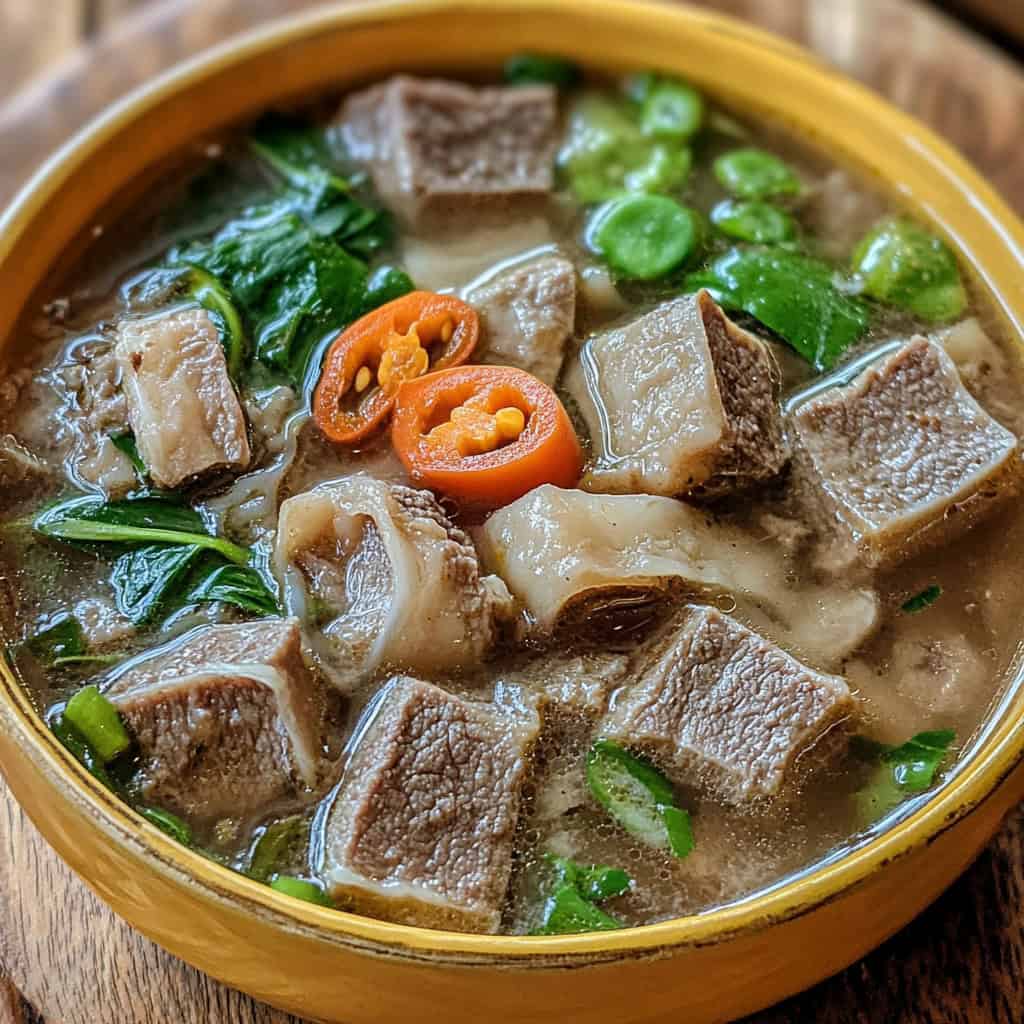






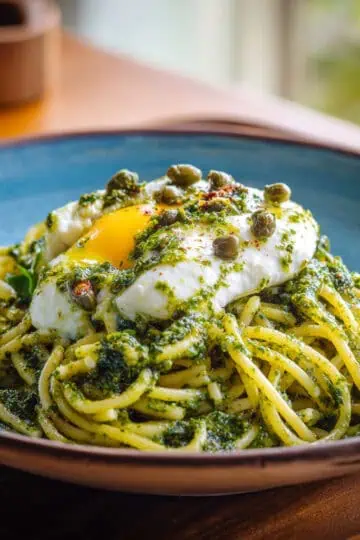
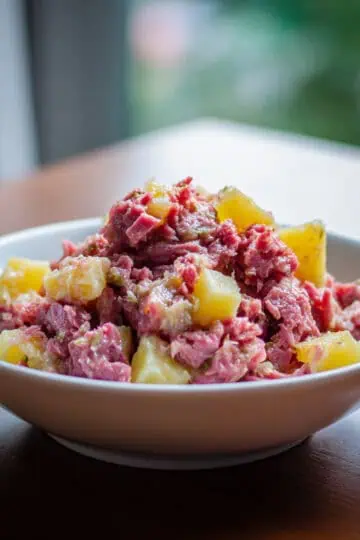

Comments
No Comments